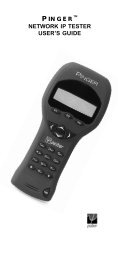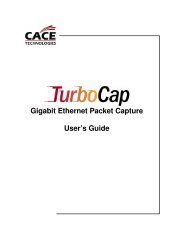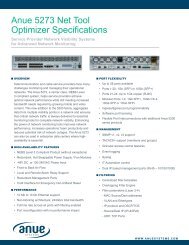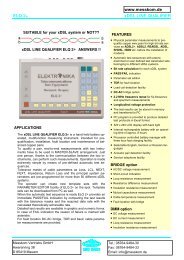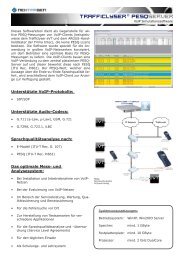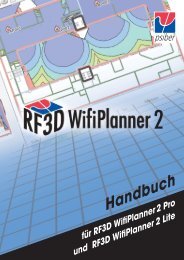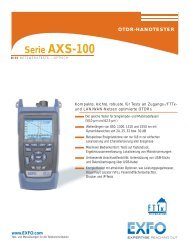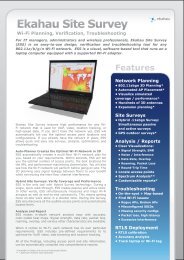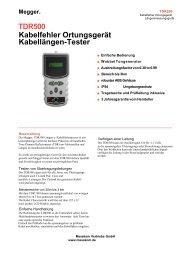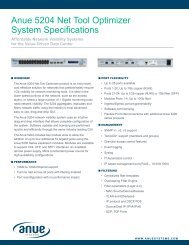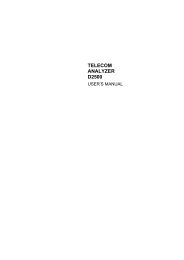ISDN ANALYZER D1080 - messkom.de
ISDN ANALYZER D1080 - messkom.de
ISDN ANALYZER D1080 - messkom.de
You also want an ePaper? Increase the reach of your titles
YUMPU automatically turns print PDFs into web optimized ePapers that Google loves.
<strong>ISDN</strong> <strong>ANALYZER</strong> <strong>D1080</strong> USER’S MANUAL REV. 5<br />
For the PRIMARY (E1) access the TEI is always fixed since the<br />
primary accesses are always of POINT-POINT type. The <strong>de</strong>fault<br />
value is FIXED 0. Use the CHANGE option to select a fixed TEI<br />
other than 0.<br />
54<br />
Profile: pto select the type of profile to be used for the<br />
tests. The options available are:<br />
− SPEECH: used to send voice information with a<br />
connection in which although at 64Kbit/s at the user’s<br />
interface, the signal can be properly manipulated within<br />
the network (compression, coding, etc.). Press SPEECH<br />
several times to select the audio coding between the A<br />
and μ law (North America).<br />
− 3.1K: used to send information for the 3.1KHz audio<br />
band in transparent mo<strong>de</strong>, that is without altering the<br />
signal with the voice coding and compression techniques<br />
that are typical of the SPEECH service (i.e. data<br />
transmission with mo<strong>de</strong>m in voice band).<br />
− FAXG3: used for FAX G.3 audio connections. It is a<br />
teleservice that can be associated with the 3.1KHz carrier<br />
service.<br />
− 64Kb: for generic data connections at 64 Kbit/s. This<br />
service supports the UDI (Unrestricted Digital<br />
Information) transfer used for applications that need an<br />
entirely numerical transfer from user to user at 64 Kbit/s.<br />
The signal cannot be altered (i.e. compressed) during the<br />
whole path. The word “Unrestricted” indicates that the<br />
information is transferred with no alteration, that is the<br />
service is transparent.<br />
− 64K- OSI: for data connections with OSI protocols.<br />
CHAPTER 7. CONFIGURING THE INSTRUMENT



